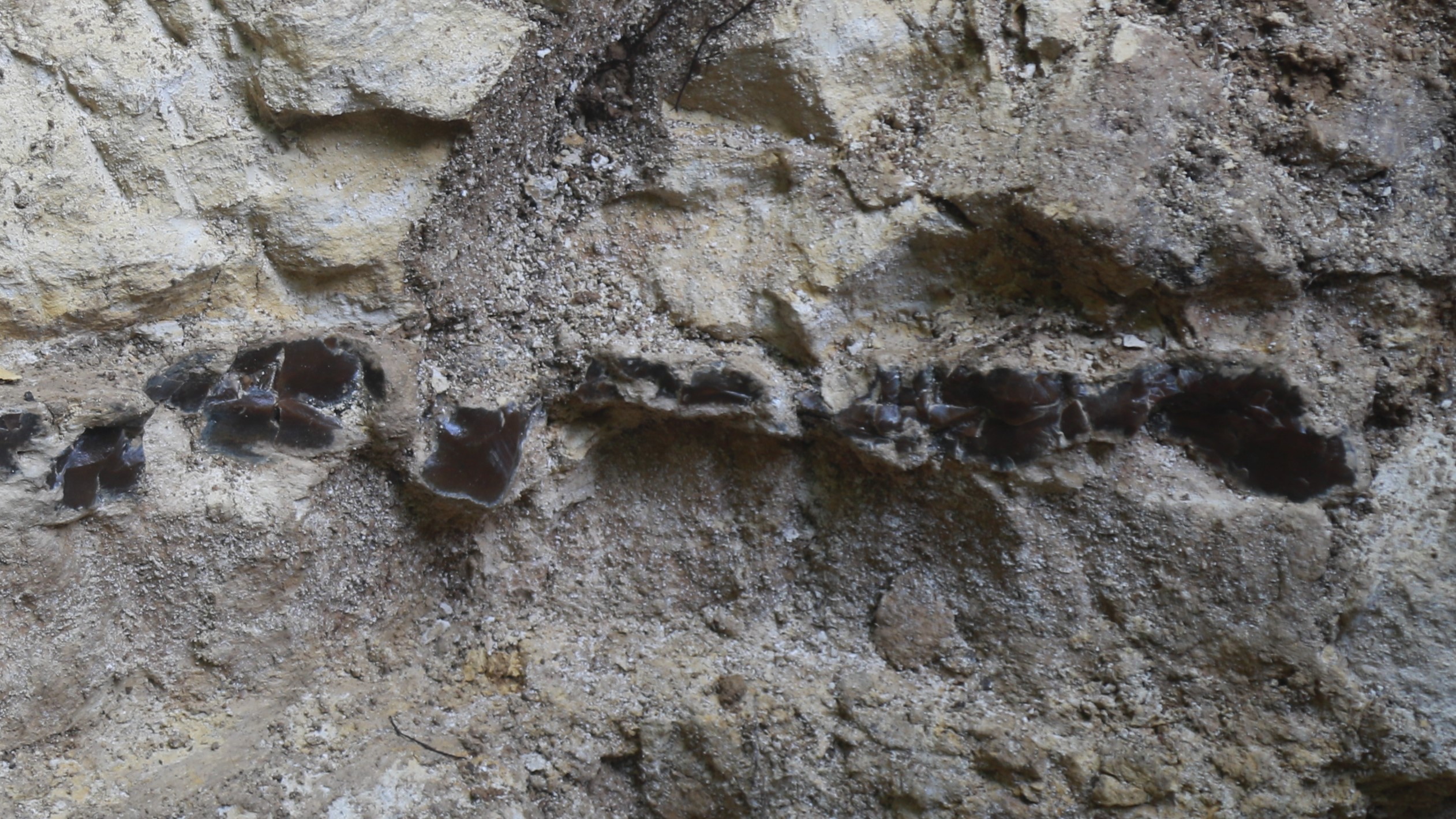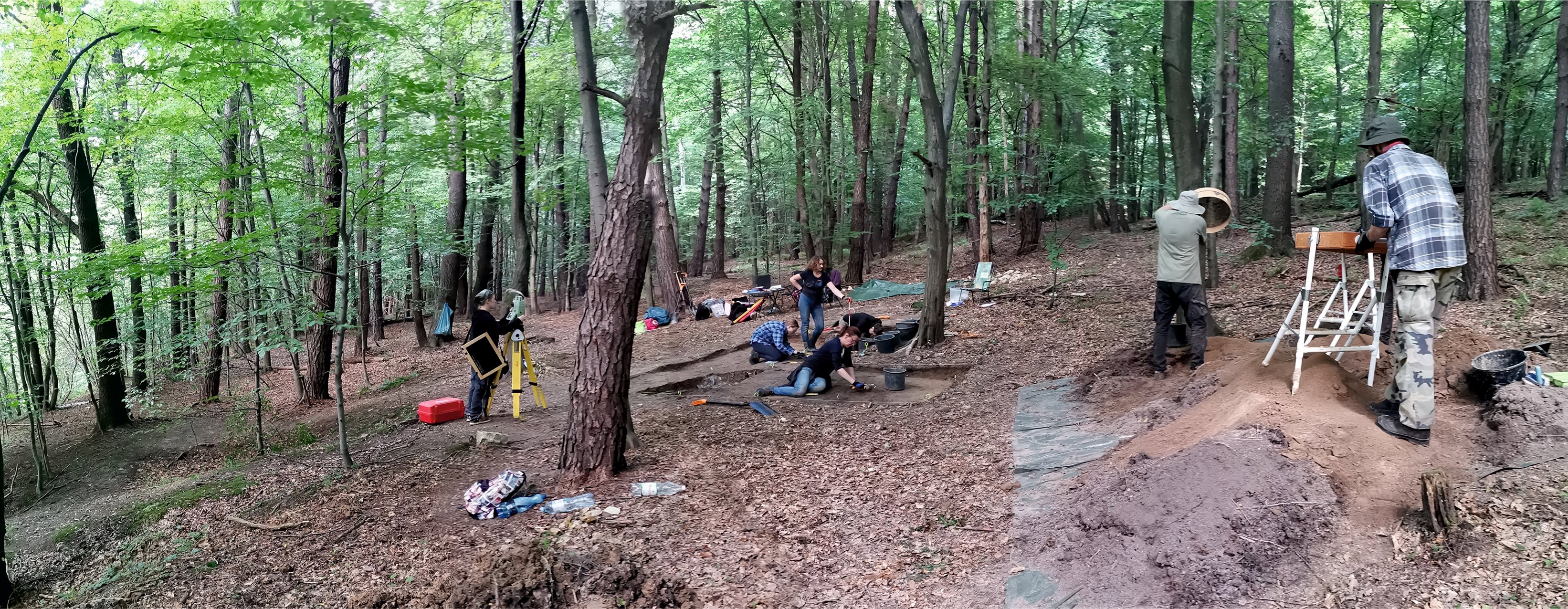Research season 2022
The research season of 2022 on archeological site Poręba Dzierżna lasted with breaks, from May 29 to August 20, 2022.
Besides the research director, PhD Magdalena Sudoł-Procyk from Institute of Archeology of Nicolaus Copernicus University and archeologists from Toruń taking part in this project (MA Magdalena Malak, MA Martyna Wiejacka, MA Hubert Binnebesel), PhD Jon Bączkowski, PhD Paweł Szczepanik and MA Jan Wiejacki also participated in the research. Similar to previous years, the site was visited by consultans PhD Maciej T. Krajcarz and PhD Dagmara H. Werra. Moreover, numerous guests paid a visit: Professor Krzysztof Cyrek, PhD Elżbieta Trele-Kieferling and PhD Damian Stefański from the Archaeological Museum in Krakow, PhD Jarosław Wilczyński from the Institute of Systematics and Evolution of Animals of the Polish Academy of Sciences PAN in Krakow and PhD Andrzej Wiśniewski from University of Wrocław.
This year, an important research task was to collect numerous samples from the profiles of the mining facility. PhD Marine Frouin and Taylor Grandfield of the Luminescence Dating Research Laboratory, Stony Brook University, USA, collected sediment samples for OSL dating.
Palaeogeneticist, PhD Viviane Slon of the Historical and Prehistorical Genetics Laboratory, Tel Aviv University in Israel, collected samples to study the presence of ancient DNA in sediments.
Geologist, PhD. M. Krajcarz, prof. ING PAN in Warsaw, collected samples for micromorphological tests.
Numerous documented charcoals were submitted for anthractological analysis and C14 dating.
MA Tomasz Herbich from IAiE PAN in Warsaw performed GPR studies on a larger area of the site.
The first stage of excavation works consisted exploring some of the sediments surrounding the shaft and extending the trench to the South and West. Thanks to these works, the outlines of other objects, probably of a similar mining nature, were discovered. At a later stage of works, exploration of sediments filling the mining shaft has been continued. Most of them were heavily debris, with a small amount of mostly natural flint material. The bottom of the shaft has been documented in the form of large, strongly fractured limestone blocks. In the south-eastern part of the object, it became possible to capture it’s edge, which cut through the shallow seam of flint lying in the weathered clay.
The research in 2022 provided a lot of important information about morphology and stratigraphy of the shaft. The discoveries of current season resulted in the emerge of new questions related, for example, with the context of discovered objects in relation to each other and flint deposits. We will be looking for answers to them during next research season.
Authors of the photos: J. Bączkowski, H. Binnebesel, M. Sudoł-Procyk, P. Szczepanik, J. Wiejacki.






